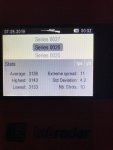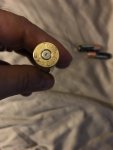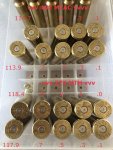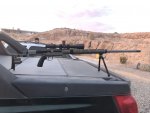Has anyone though of necking down the 33xc to a 30 cal or a 30xc project build. Love to see how the heavy 230 smk or 240 smk would fair.
The overbore ratio would be between the 30/378 Weatherby and the 338 Snipetac, so similar barrel life, tolerance to shooting strings, etc..
QL suggests you'd be able to fill the case with H50bmg and just max out pressure, so it's still not so big you couldn't find slow enough powders.
I built a 7/338LI with a little more overbore than the 30/338xc would have. After a few hundred rounds, it would poof a bullet or two in a 10 shot string even after dropping the velocity 250 fps. It was all fun and games in the beginning though. The rpm a bullet will take isn't fixed, it depends on the bore condition, and what that level of overbore does to the bore isn't pretty. The higher BC bullets run at lower velocities, but they also need more twist, so there are hard limits on the high BC jacketed bullets at high velocity approach. Hunting rifles or entertaining toys can push things harder.
The 338 Snipetac would enjoy a larger selection of solid bullets than the 30 cal.
The 33xc has a level of overbore similar to the 416 Barret and improved 375CT cartridges. The 375xc is similar to the 338 lapua, 300WM, and a little more than the 408CT. I think the 33XC case capacity was well thought out.







